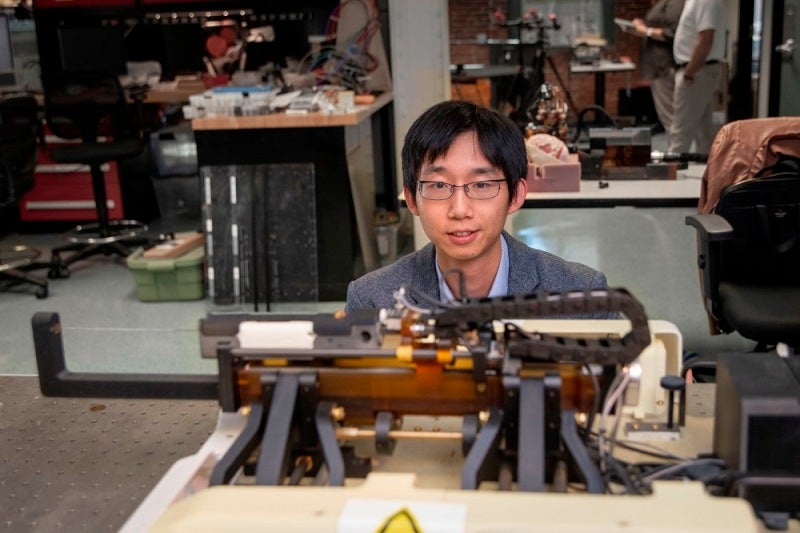
A biomedical engineer at Worcester Polytechnic Institute (WPI) in the US has received a five-year award from the National Institute of Health for his ongoing work on an MRI-guided robotic system that can accurately detect and monitor prostate cancer with minimally invasive technology.
Haichong (Kai) Zhang, an assistant professor in biomedical engineering and robotics engineering at the institute, secured a $1.8m Director’s Early Independence Award from the NIH.
Zhang, along with Gregory Fischer, who is a professor of robotics engineering and an expert in the MRI-guided robotic surgery, is developing the surgical imaging robot.
This robotic system can detect and analyse three different indicators of the cancer – those tissues with low-oxygen levels due to cancer growth, a 3D image of any mass and high protein levels produced by cancer-causing cells.
Zhang’s robotic device will make use of photoacoustic imaging, which is a mix of optical imaging and ultrasound. It will direct light into tissue and receive acoustic waves in return.
This acoustic signal will offer information on the health of the tissues. As different tissues emit different acoustic waves, the system will be able to differentiate between healthy, oxygenated tissue and hypoxic tissue.
How well do you really know your competitors?
Access the most comprehensive Company Profiles on the market, powered by GlobalData. Save hours of research. Gain competitive edge.

Thank you!
Your download email will arrive shortly
Not ready to buy yet? Download a free sample
We are confident about the unique quality of our Company Profiles. However, we want you to make the most beneficial decision for your business, so we offer a free sample that you can download by submitting the below form
By GlobalDataThis robot, which will work within an MRI machine, will be able to insert an imaging probe into the patient’s rectum, next to the prostate. The probe will be robotically manipulated to capture images from different angles. These images will then help in ultimately compiling a 3D image of the prostate.
The technology is expected to be more helpful in detecting tumour in earlier stages compared to an ultrasound image, which usually indicates only the structure of the prostate and not the location of the tumour. Furthermore, early stage tumours usually go undetected in an ultrasound.
The robotic system will also be equipped to carry out guided-needle biopsies.
Zhang expects his system to provide more accurate results than existing tests such as ultrasounds and biopsies.
Zhang said: “One-fifth of men will be diagnosed to have prostate cancer in their lifetime and the recurrence of it is very high.
“Right now, the best methods for detecting prostate cancer early are not nearly as accurate as we need them to be, and they are not risk-free. My goal is to create a minimally invasive, easily accessible, and cost-effective way to better detect this cancer.”
According to 2016 cancer data released by the NIH, prostate cancer is the most usually diagnosed non-cutaneous cancer. Almost 200,000 new cases were diagnosed in the US in 2016.
Conventionally, a blood test is carried out to check for prostate-specific antigens (PSA), which may indicate the presence of cancer cells. Besides blood test, manual rectal examination, ultrasounds and biopsies are done to detect the presence of cancer cells.
However, randomly-taken biopsy samples may tend to underestimate the presence of high-risk prostate cancer. Furthermore, these may lead to false diagnoses and may even require a person to be put through a repeat biopsy.
According to the NIH report, grade or stage of prostate cancer was only accurately confirmed in 37% of biopsied cases.



